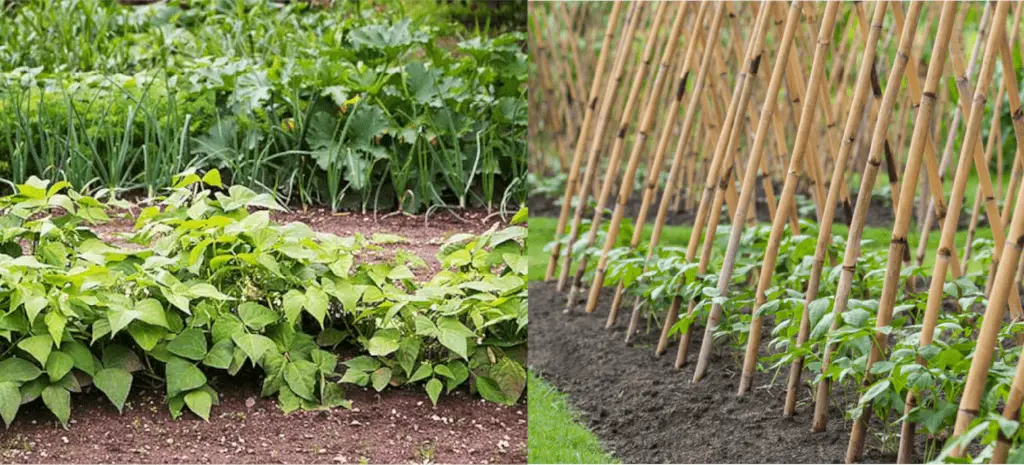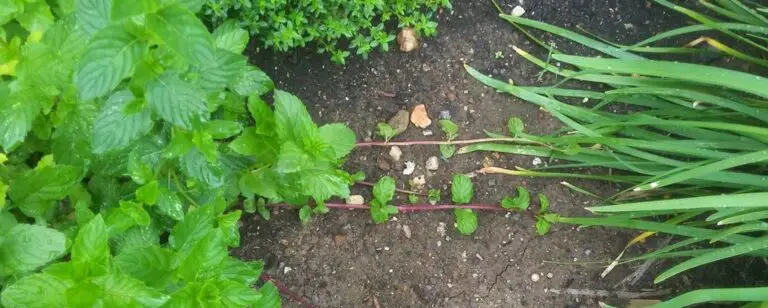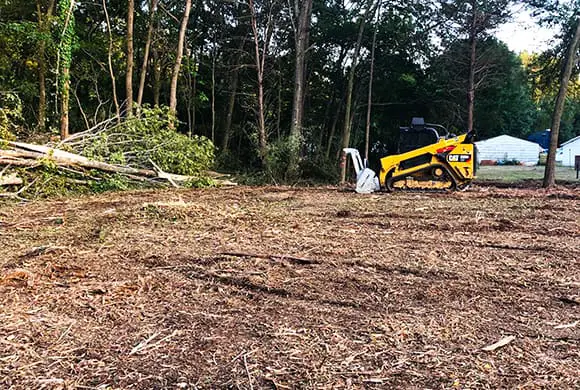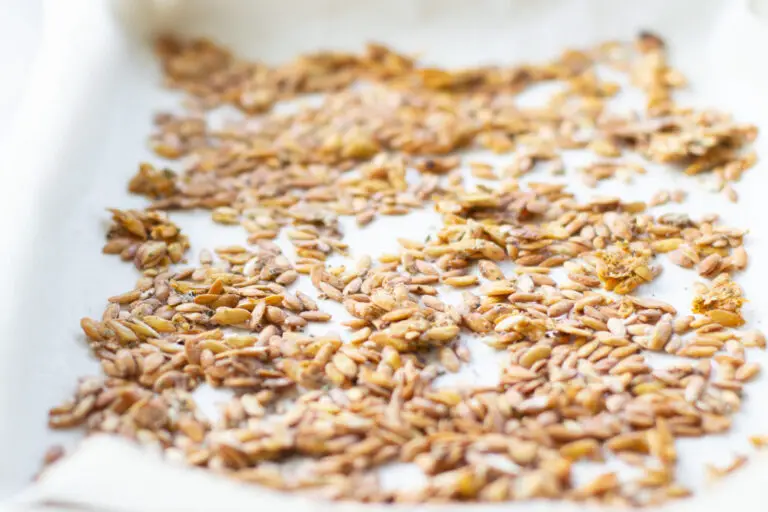How Tall and Big Do Green Bean Plants Grow? The Science Behind Their Size

Green beans are a popular and versatile vegetable that can be grown in a variety of climates and soil types. But have you ever wondered how tall and big green bean plants can grow?
The size of a green bean plant is determined by a number of factors, including the type of bean, the growing conditions, and the care and maintenance provided by the gardener.
Generally, bush beans grow to about two feet tall, and pole green beans can grow to ten feet or more. Both pole and bush green bean crops are dependable and easy to grow, producing enormous yields with little work.
In this article, we will explore the science behind green bean plant growth and size and provide tips for encouraging maximum growth in your green bean plants.
From figuring out the best climate to the best way to plant, we’ll go over everything you need to know to grow healthy green bean plants that produce a lot of beans.
Whether you’re a new gardener or have been doing it for years, this article will help you understand how green bean plants grow and develop.
Introduction to Green Beans and Their Growth Habits
Green beans, also known as common beans, snap beans, string beans, or French beans, are a type of legume that is grown for its edible seeds and pods. They are a popular vegetable that is enjoyed in many cuisines around the world and are a valuable source of protein, fiber, and nutrients.
Green beans are typically grown in warm, sunny locations and require well-draining soil and regular watering to thrive.
Green bean plants are annuals, which means they complete their entire life cycle within a single growing season. Green beans are typically planted from bean seeds, which are either sown directly into the soil or started indoors and then transplanted outside once the weather is warm enough.
Green bean plants have a fast growth rate and can reach their full size within just a few months.
Green bean plants are known for their distinctive growth habit, which consists of a main stem with branches that bear the leaves, flowers, and pods. Most of the time, the leaves of a green bean plant are made up of multiple leaflets that are arranged along the stem.
The flowers are small and white or purple, and they are pollinated by insects or the wind. The pods of a green bean plant are the part that is harvested and eaten and are typically long, thin, and green.
The Factors That Determine the Size of Green Bean Plants
The size of a green bean plant is a result of both its genes and its environment. The type of green bean, or variety, that is grown can have a significant impact on the plant’s size and growth habit.
Some varieties of beans are naturally more compact and bushy, while others are tall and sprawling. In general, bush varieties of green beans tend to be smaller and produce a more concentrated harvest, while pole varieties are taller and produce a more extended harvest.
The growing conditions can also affect the size of a green bean plant. Adequate sunlight, moisture, and nutrients are essential for healthy plant growth.
Green bean plants require at least six hours of direct sunlight per day to thrive and need constant watering to prevent drought stress.
Soil quality and fertility can also play a role in green bean plant size. Poor-quality soil or soil that is low in essential nutrients can lead to stunted or slow growth.
The last thing that can affect how big green bean plants get is how well the gardener takes care of them. Regularly pulling weeds and getting rid of pests can help green beans grow to their full potential by preventing competition and damage.
Proper pruning and training can also help control the size and shape of the plants, and encourage maximum yields.
The Role of Sunlight, Soil, and Water in Green Bean Plant Growth
Sunlight, soil, and water are three essential elements for healthy green bean plant growth.
Green bean plants need enough sunlight to make the leaves, flowers, and pods that make them stand out. Green bean plants require at least six hours of direct sunlight per day to thrive and will produce their best yields in locations that receive full sun. Without enough sunlight, green bean plants may become leggy and produce fewer pods.
Soil quality and fertility are also crucial for green bean plant growth. Green bean plants prefer well-draining soil that is rich in organic matter and nutrients. Soil that is too sandy or too clayey can lead to poor plant growth, as can soil that is low in essential nutrients like nitrogen, phosphorus, and potassium.
To make sure your green bean plants are healthy, you should test the soil and, if needed, add amendments to improve its structure and fertility.
Finally, consistent watering is essential for green bean plant growth. Green bean plants need to be watered regularly to avoid drought stress, which can cause them to wilt, turn yellow, and produce less.
| The amount of water that green bean plants need will vary depending on the weather, soil type, and other factors, but in general, it is important to keep the soil evenly moist but not waterlogged. Overwatering can also be a problem, as it can lead to root rot and other problems. |
How Tall and Big Do Green Bean Plants Typically Grow?
The size of a green bean plant will vary depending on the variety of beans and the growing conditions. In general, bush varieties of green beans tend to be smaller and more compact, with mature plants reaching heights of around 1-2 feet. Pole varieties, on the other hand, can grow much taller, with mature plants reaching heights of 6–10 feet or more.
The amount of sunlight, soil quality, and water availability can also affect the size of a green bean plant. Plants that receive plenty of sunlight and are grown in fertile, well-draining soil will tend to be larger and produce more pods.
In the same way, plants that get watered regularly and are cared for and maintained regularly will be healthier and stronger, which will lead to bigger plants and higher yields.
In general, green bean plants need to be cared for and grown in the right way so that they can reach their full size and potential. With the right conditions, green bean plants can grow quickly and produce an abundance of pods for harvest.
Tips for Encouraging Maximum Growth in Green Bean Plants
There are several steps that gardeners can take to encourage maximum growth in green bean plants. Here are some tips for achieving healthy, vigorous green bean plants:
- Choose the right variety: Select a green bean variety that is well-suited to your growing conditions and the type of harvest you want. Bush varieties are smaller and produce a more concentrated harvest, while pole varieties are taller and produce a more extended harvest.
- Plant in the right location: Bean seeds prefer to be planted as close as possible to where they will grow. Green bean plants require at least six hours of direct sunlight per day to thrive. Choose a location that receives full sun and has well-draining soil.
- Provide adequate moisture: Consistent watering is essential for healthy green bean plant growth. Water the plants regularly, about 2 inches per square foot per week. Please take care not to overwater or allow the soil to dry out completely.
- Fertilize as needed: Green bean plants require nutrients to grow and produce their characteristic leaves, flowers, and pods. Test the soil and add amendments as needed to improve its structure and fertility.
- Control pests and weeds: Pests and weeds can compete with green bean plants for water, sunlight, and nutrients, leading to reduced growth and yields. Regularly monitor for pests and weeds, and take steps to control them as needed.
By following these tips, gardeners can get their green bean plants to grow as much as possible and get a lot of beans from them.
The Benefits of Growing Big, Healthy Green Bean Plants
Growing big, healthy green bean plants has several benefits for gardeners. Here are some of the advantages of encouraging maximum growth in green bean plants:
- More and bigger pods: Green bean plants that are healthy and vigorously growing will produce more and larger pods for harvest. This means more delicious green beans to enjoy, either fresh from the garden or preserved for later use.
- Improved yields: Green bean plants that are healthy and well-maintained will produce higher yields than plants that are stressed or neglected. This means more green beans per plant and more green beans overall, which can be a significant benefit for gardeners who are looking to maximize their harvest.
- Better quality green beans: Large green beans typically have higher levels of vitamins and minerals than smaller varieties. Including large green beans in your meals is an easy way to increase your daily intake of important vitamins and minerals without adding too many calories or fat.
- Better resistance to pests and diseases: Green bean plants that are healthy and growing vigorously are better able to resist pests and diseases. This means fewer problems with pests and diseases, which can save time and effort for the gardener and improve the overall health and productivity of the vegetable garden.
- Easier to pick and harvest: The bigger size of these plants also makes easier to pick and harvest green beans. Home gardeners will be pleased to learn that larger green beans can be easily handpicked from the plant without needing any extra tools or help.
- More attractive plants: Green bean plants that are healthy and growing well are more attractive and appealing to look at. This can enhance the aesthetic appeal of the vegetable garden and provide a more pleasing environment for both the gardener and the plants.
In general, growing tall, big, and healthy green bean plants has a lot of benefits and can make gardening more successful and enjoyable.
Conclusion: The Importance of Understanding Green Bean Plant Growth for a Successful Harvest.
In conclusion, understanding the growth habits and requirements of green bean plants is essential for achieving a successful harvest. Gardeners can get the most growth out of their green bean plants by choosing the right variety, giving them the right conditions to grow in, and giving them the right care and maintenance.
Growing green beans can be a rewarding and enjoyable experience, and understanding how these plants grow and develop is an important part of that experience. Whether you’re a new gardener or an old pro, knowing how green bean plants grow will help you grow healthy, strong plants with lots of tasty pods to harvest.
So, if you’re planning to grow green beans in your garden, take the time to learn about their growth habits and requirements. With the right knowledge and care, you can grow big, healthy green bean plants that will provide you with a delicious and nutritious harvest.






